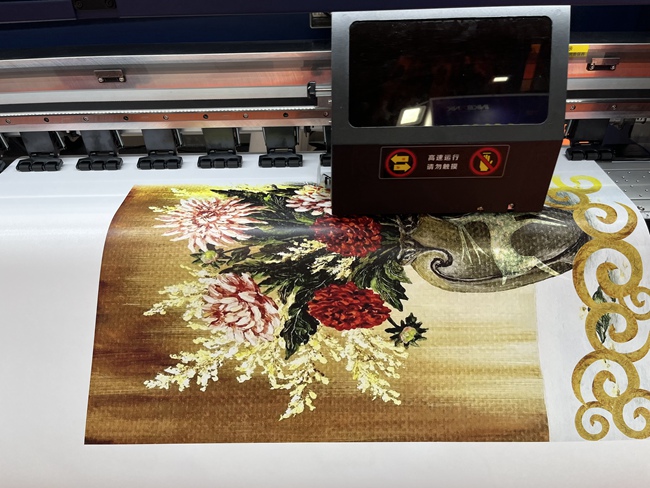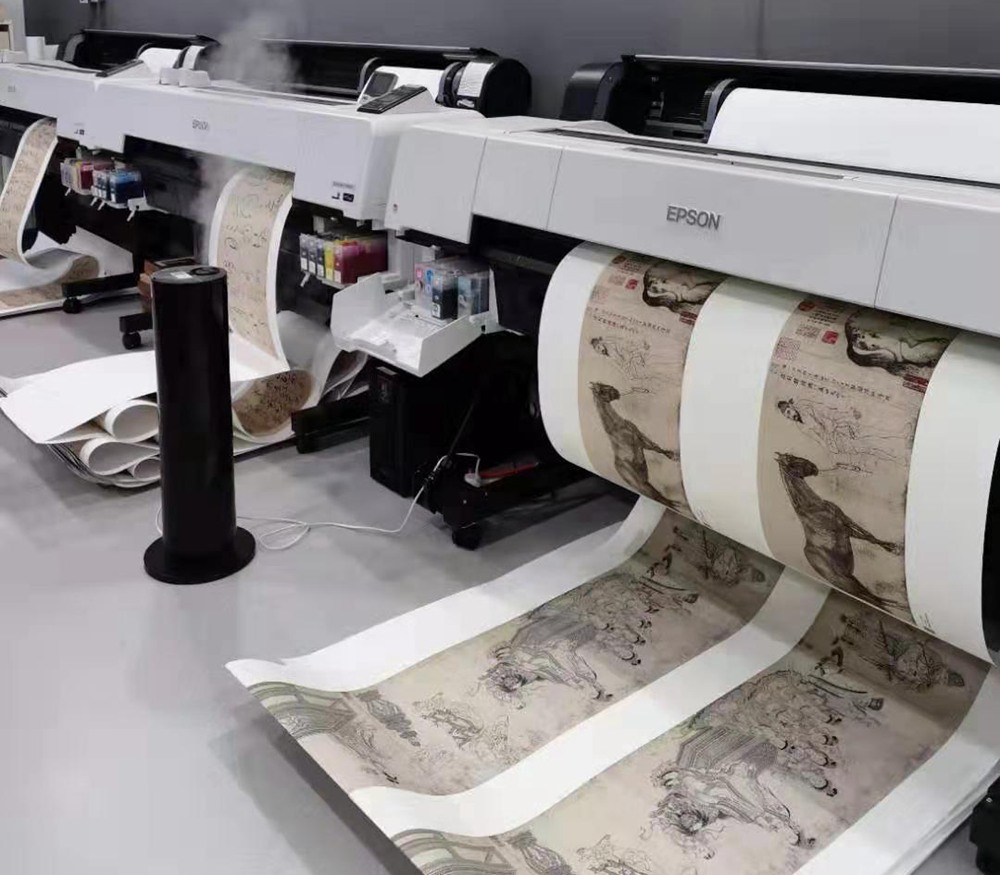
With the development of science and technology, digital printing technology has gradually expanded from the fashion and textile industries to a wider range of art fields, becoming a new tool for artists to create and express themselves. Digital printing technology not only breaks the limitations of traditional printing and painting, but also provides more creative possibilities for artworks, becoming an emerging force that cannot be ignored in artistic creation.
Basic Principle of Digital Printing
Digital printing is a technology that prints images or designs directly onto materials through computer control, and is usually applied to a variety of medias such as textiles, ceramics, and glass. The biggest difference between digital printing and traditional printing methods is that digital printing does not require physical templates. Artists only need to design patterns on the computer, and digital printing machines can accurately print these patterns onto the selected materials. This not only greatly reduces the waste of materials in traditional processes, but also gives creators more freedom and flexibility.
Breaking the Limitations of Traditional Media
In traditional art, artists usually rely on fixed media such as oil painting, sculpture, and printmaking, and each medium has its own unique material and technical limitations. The introduction of digital printing technology allows artists to easily expand their works to media that have never been used before. For example, through digital printing, artworks can not only appear on canvas, but also be printed on a variety of materials such as fabric, plastic, and metal, making the expression of art more diverse.
In addition, digital printing breaks the limitations of handmade painting, and artists can present complex patterns and delicate details with high precision and high speed. This has changed the way artworks are produced to a certain extent. Traditional art often requires a lot of time and effort to complete, while digital printing can greatly improve efficiency, especially when mass-producing customized artworks.

New Tools for Artistic Creation
Digital printing technology provides artists with new tools and means, especially in contemporary art, more and more artists are beginning to incorporate this technology into their creative process. For example, digital printing allows artists to use digital software to perform complex color control and pattern design, which not only enables them to achieve effects that were previously impossible to achieve by hand, but also allows them to explore the fusion of different styles and forms of expression.
Many famous contemporary artists have created a variety of artworks through digital printing technology. For example, hand-painted works are digitized by digital printing and then printed on different materials to achieve the diversity of art forms. Digital printing allows artists to adjust the color, structure and details of their works at any time, breaking physical limitations and making artistic creation more flexible and innovative.
Interactive and Personalized Art Experience
Digital printing not only brings convenience to artists, but also changes the way audiences interact with artworks. Through digital printing technology, audiences can participate in the design and creation of artworks, thereby gaining a personalized art experience. For example, artists can provide audiences with a basic design template, allowing them to create their own artworks by choosing different colors, patterns, and layouts. This interactive way of creation not only enhances the audience's sense of participation in the artwork, but also creates unique, tailor-made artworks.
Behind this personalized art experience is the flexibility provided by digital printing technology. Artworks are no longer a single, static existence, but can be customized and changed according to the audience's preferences and needs. This innovative interactive mode has opened up a new direction for artistic creation.

Green and Environmentally Friendly Art Creation
With the improvement of environmental awareness, the environmental friendly advantages of digital printing technology in the production of artworks have also received more and more attention. Compared with traditional printing and hand-made production, digital printing greatly reduces material waste and energy consumption. Its characteristics of waterless printing and on-demand production make the art creation process more environmentally friendly. This is an important advantage for contemporary artists who focus on sustainable development.
The Perfect Combination of Art and Technology
Digital printing technology has brought unprecedented possibilities for artistic creation. It not only breaks the limitations of traditional art media and techniques, but also provides artists with greater creative freedom and opportunities for personalized expression. From the diverse expression of artworks, to the interactive experience between the audience and art, to the possibility of environmentally friendly creation, digital printing is changing our perception of art.
In the future, with the further development of technology, digital printing will play a more important role in the field of art, providing artists and audiences with more creative space and practical opportunities.
For pigment inks for Epson printers and pigment inks for Canon printers, please feel free to leave us a message, thank you.
 Oct 28,2024
Oct 28,2024


